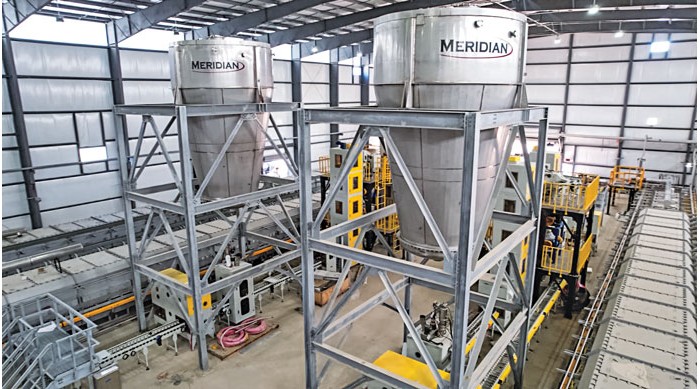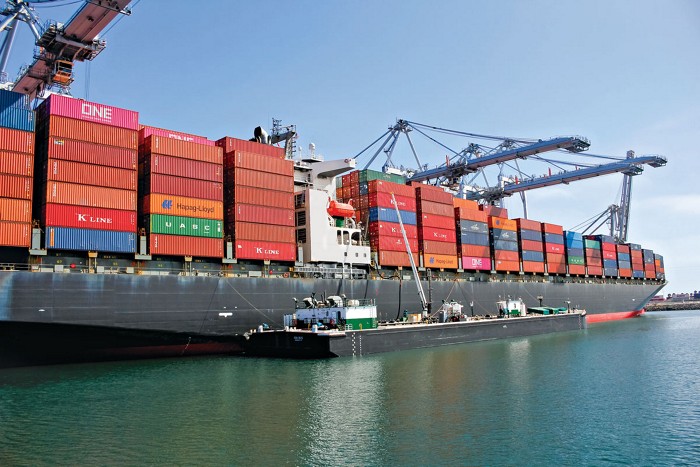Advertisement
Grab your lab coat. Let's get started
Welcome!
Welcome!
Create an account below to get 6 C&EN articles per month, receive newsletters and more - all free.
It seems this is your first time logging in online. Please enter the following information to continue.
As an ACS member you automatically get access to this site. All we need is few more details to create your reading experience.
Not you? Sign in with a different account.
Not you? Sign in with a different account.
ERROR 1
ERROR 1
ERROR 2
ERROR 2
ERROR 2
ERROR 2
ERROR 2
Password and Confirm password must match.
If you have an ACS member number, please enter it here so we can link this account to your membership. (optional)
ERROR 2
ACS values your privacy. By submitting your information, you are gaining access to C&EN and subscribing to our weekly newsletter. We use the information you provide to make your reading experience better, and we will never sell your data to third party members.
Trade
Chemicals are caught up in U.S.-China trade war
U.S. tariffs target large-volume chemicals, and China responds in kind
by Jean-François Tremblay
June 20, 2018
| A version of this story appeared in
Volume 96, Issue 26
The chemical industries of the U.S. and China are in the line of fire of the trade war that is heating up between the two countries.
U.S. President Donald J. Trump initiated the hostilities in April largely to punish China for its “Made in China 2025” industrial policy. At the time, the U.S. published a list of 1,300 goods subject to tariffs, but it went easy on Chinese chemical makers. In contrast, the Chinese response took aim at many big-volume chemicals made in the U.S., including some major plastics.
Now the U.S. has published a revised list that hits Chinese chemical makers harder. Starting on July 6, the U.S. will slap import duties of 25% on $50 billion worth of products made in China. The products are divided into two groups. The second group, which is still subject to a public comment period, targets many basic plastics as well as polyurethane, one of the rare polymers that China exports in large quantities to the U.S.

Expanded U.S. and Chinese tariffs of 25% aim at more chemicals.
a No longer targeted in new list.
Source: U.S. and Chinese announcements
China retaliated with similar tariffs, also split into two groups. The first group, on which tariffs become effective July 6, contains few chemicals. As was the case for the U.S., chemicals are largely in a second list. Covering more chemicals than announced in April, this second list aims at large-volume items like polyethylene, polyvinyl chloride, and acrylonitrile.
The American Chemistry Council, the main industry group for U.S. chemical producers, issued a statement opposing the tariffs. “China is one of the U.S. chemical industry’s most important trading partners, importing 11%, or $3.2 billion, of all U.S. plastic resins in 2017,” the group noted. “The administration has now pit U.S. chemical manufacturing directly against China at the front lines of this conflict.”
Trade hostilities may worsen. In response to China’s retaliatory tariffs, President Trump instructed the U.S. Trade Representative to identify another $200 billion worth of Chinese goods on which to impose an import tariff of 10%. In a furious response, China’s Ministry of Commerce promised to “fight back forcefully” through “comprehensive measures.”
Chemical companies based in the Middle East will take advantage of Chinese tariffs to sell more ethylene derivatives in China, according to Joel Lindahl, vice president of olefins research at the consulting firm Wood MacKenzie. If U.S. producers try to sell in China, they will earn about $200 less per ton, he added.




Join the conversation
Contact the reporter
Submit a Letter to the Editor for publication
Engage with us on Twitter